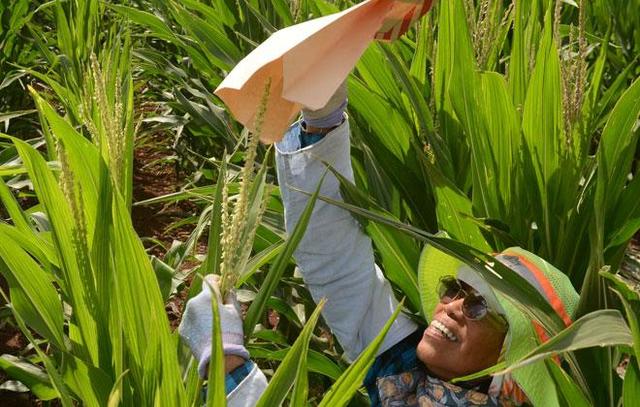As lawyers defending Hawaii County’s ordinance regulating genetically modified crops work toward an Oct. 1 deadline to file their final brief, a key attorney challenging the new law is scheduled to speak about the issue at a national gathering today in Kailua-Kona.
Former Hawaii Attorney General Margery Bronster, now representing a coalition of agricultural producers suing three Hawaii counties, is scheduled to speak at the National Association of State Departments of Agriculture’s annual meeting, being held this year at the Sheraton Kona Resort & Spa at Keauhou Bay. The conference, which started Sunday and runs through Wednesday, is hosted by NASDA President and Hawaii Chairman of Agriculture Scott Enright.
“Ms. Bronster will no doubt speak on the horrors of having local governments attempting to govern,” said Kauai County Councilman and former state Sen. Gary Hooser in a Wednesday blog post. “At the minimum the (NASDA) in its wisdom or political acumen should have invited an opposing viewpoint and balanced the conversation with a presentation on the benefits of local control and local agricultural policy.”
Bronster is scheduled to address the group at 10:45 a.m. today on “Local Jurisdictional Challenges Facing Agriculture.” She did not return phone messages Friday or Monday for comment.
Those “jurisdictional challenges” are at the heart of lawsuits biotechnology and agricultural interests have filed against Maui, Kauai and Hawaii counties.
Hawaii County’s lawsuit centers around its 2013 ordinance that bans growing GMO crops in open-air conditions, with some exceptions. Papaya and corn already growing on the island, as well as scientific study in greenhouses and other enclosed settings, were exempted by the county ordinance. The law is on hold after U.S. Magistrate Judge Barry Kurren invalidated the county’s partial GMO ban in a Nov. 27 order, saying state law pre-empts county law on the issue.
Hawaii County has appealed to the Ninth Circuit Court of Appeals and enlisted the help of attorneys from national groups Earthjustice and the Center for Food Safety.
“The district court erred by concluding that Hawaii law impliedly pre-empts Hawaii County Ordinance 13-121’s provisions regulating planting of genetically engineered crops, where Hawaii has never enacted any law regulating that subject matter, no legislative history indicates the Hawaii Legislature ever intended to do so, no Hawaii administrative agency has ever promulgated any regulation doing so and Hawaii County has a constitutional duty to protect the public trust,” attorneys for the county said in an May 4 court filing.
The agriculture interests challenging the ordinance include Hawaii Papaya Industry Association, Big Island Banana Growers Association, Hawaii Cattlemen’s Council Inc., Pacific Floral Exchange Inc., Richard Ha, Jason Moniz, Gordon Inouye, Eric Tanouye and Hawaii Floriculture and Nursery Association. They’ve been joined by the Biotechnology Industry Organization, which bills itself as the world’s largest trade association representing biotechnology companies, academic institutions, state biotechnology centers and related organizations across the United States and in more than 30 other nations.
“The county tried to short-circuit the process by taking matters into its own hands. But the county lacks both the expertise and the authority to regulate GE crops and plants,” attorneys for that side said in an Aug. 5 court filing. “As the district court recognized, state and federal law leave no regulatory gap to be filled at the county level, and thus the ordinance is pre-empted in its entirety.”
Once the final brief is filed, it generally takes the Ninth Circuit Court of Appeals about a year to schedule oral arguments, Paul H. Achitoff, attorney for Earthjustice Legal Defense Fund, said Friday. It’s not known how long after that it will take for a ruling to come down.






